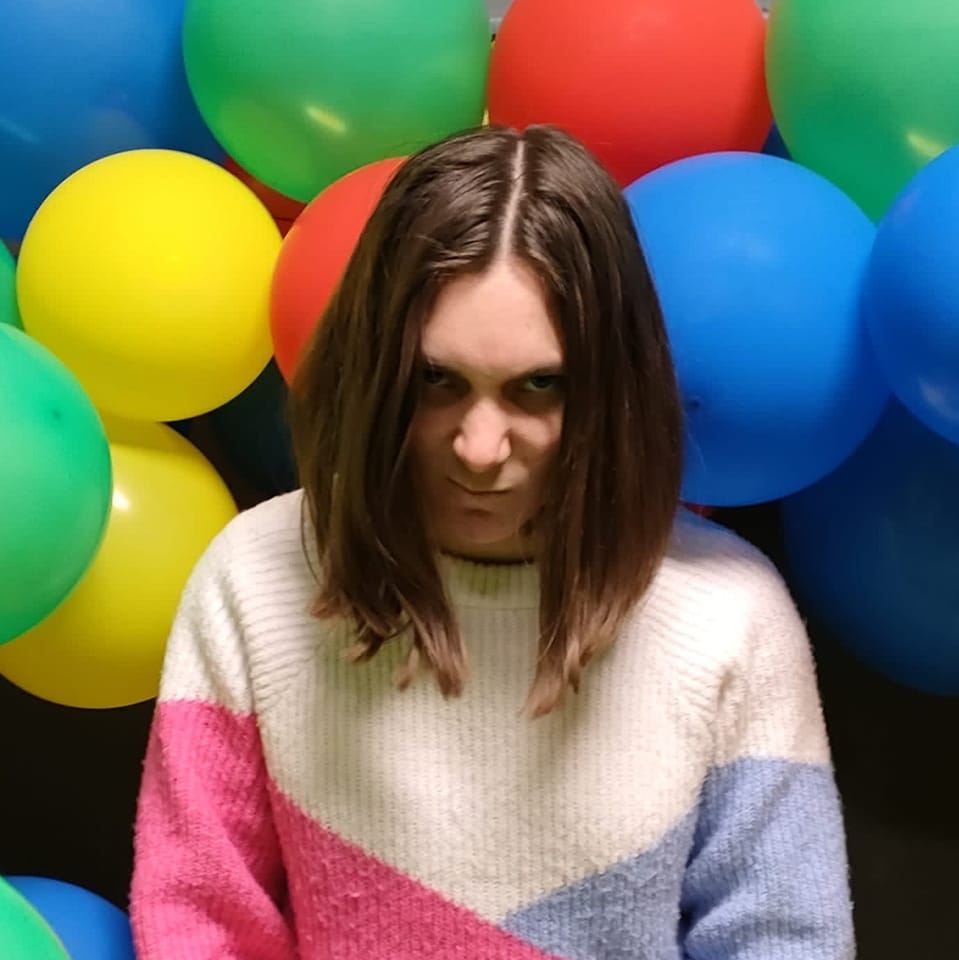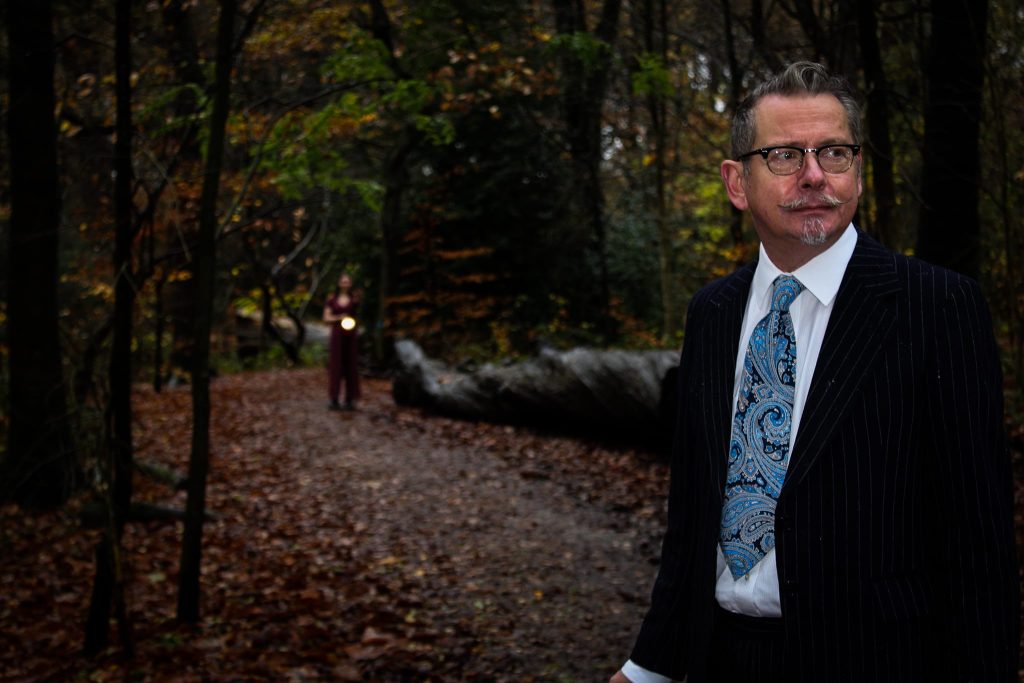The Enfield Poltergeist – 28 October, Lantern Theatre, Sheffield

Review by Peter Taranaski (Folk Phenomena).
Nestled within the leafy suburb of Sharrow (in Sheffield) we see the Lantern Theatre in the distance.
The Lantern Theatre is a cosy place with old architecture; an intimate venue perfect for seeing a play from far history so that you can soak up the feeling of the wood and ornate decoration in this small, almost secret place. Tonight we are going back in time, travelling to 1977 to experience the chills and spookiness of the “Enfield Poltergeist”. The Enfield Poltergeist refers to a famous story picked up by investigators and newspapers alike as they tried to fathom alleged supernatural occurrences within a non-assuming council house at 284 Green Street, Brimsdown. From Paul Voodini and Act284, we jump back into the groovy (and now spooky) decade and see what it is all about.
This story is essentially a spotlight on Maurice Grosse (Paul Voodini), an investigator with the Society for Psychical Research in London who has been begging for a case to look into, Janet Grosse (Kiera Rhodes) daughter of Maurice, and Janet Hodgson (Kiera Rhodes), one of the daughters of the family living on Green Street. In having these three characters (with that between Maurice and Janet H taking centre stage), the play makes an effective choice in what the key emotional core of the play is and focuses it’s 50 odd minutes on this. It is a concise play though, it doesn’t waste the time it has, and most importantly it retains many of the key aspects from the case.
Firstly, let us consider the actors. Paul Voodini does a remarkable job as Maurice Grosse. With his spiky, little upturned moustache is shown with great sympathy and heart. The characters has a lot to deal with including grief, hope, friendship, and curiosity, and Voodini covers all these facets. Amenable and warm for much of the show, he gets a very effective monologue when he is putting the coincidences together that have happened which leads to him joining the SPR, and meeting Janet Hodgson. You never doubt that this a man who “wants to believe”, whose own trauma has led him down a path which might not bear much fruit. He also gets special kudos for this brief turn at disco dancing which seems very much in character.
Kiera Rhodes is very, very good too. As part of the mystery she plays Janet Grosse as an afraid and uncertain young adult upset at her “stupid showy off clothes” and choices she has made. Necessarily detached as part of the plot, she is a ball of regret and rage but also a loving daughter. As Janet Hodgson, Rhodes has a chance to play a different uncertainty, that of an 11 year old growing up uncertain, wanting fame, and having a space left where her father walked out. She does it all, she’s bursting at the seams at the musical interludes (such as Love Me For a Reason), her arms outstretched as the songs nurture the heart of the story. As Janet H, she is also essential to how the play operates, she stomps around throwing plushies, overturning chairs and banging the walls. Her movements for doing these things are well-rehearsed and fluid. If the play is offering that this is the result of an angry spirit, then it’s choice to move the set in this way is a very good one. The set itself is a retro mix of lego, teddy bears, wooden chairs and books, styling itself almost as a combination of lounge and bedroom.
Within the play there are a number of themes that come to the fore, and the script covers this well. For example, there is grief and loss as Janet H sums up her father walking out, “… like a magic trick, but the opposite, a rabbit that disappeared.” There is notion of truth as the whole nature of the investigation is interrogated, whether either party are honest, and whether that is important or not. It also looks at coincidence, adolescence, the desire for fame, and a situation that stirs up a media frenzy. On top of this the idea of ends and coming to peace with events also runs through the show as time runs on. There is a lot packed in and it makes the show a questioning watch as to what really happened. The show’s narrative frame allows for either reality to be the correct one, it even references this by a character asking whether it is true or false, or a mixture of both.
The “Enfield Poltergeist” is a good play that does not cast a judgemental eye on history, it lays out what facts are known with the circumstances and explains why things “might have been”. As mentioned, it’s narrative works because it presents two realities, one where ghosts exists, and one without in order to dig into and present the emotion at the centre of this story. Well acting with great kinetic moments, spooks and moments of levity in the musical numbers, we wholeheartedly recommend this show for a night out.
